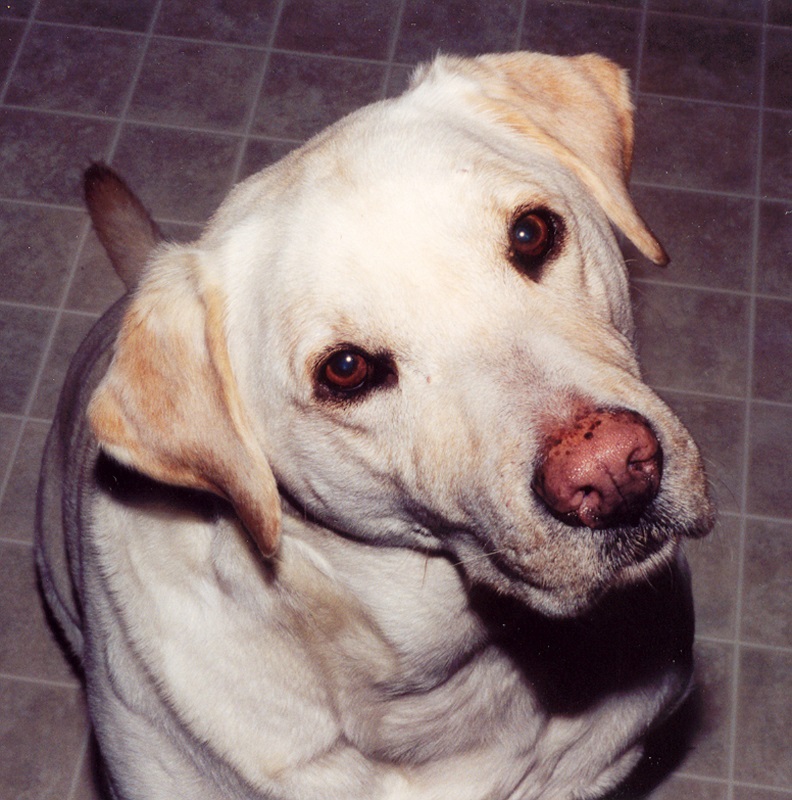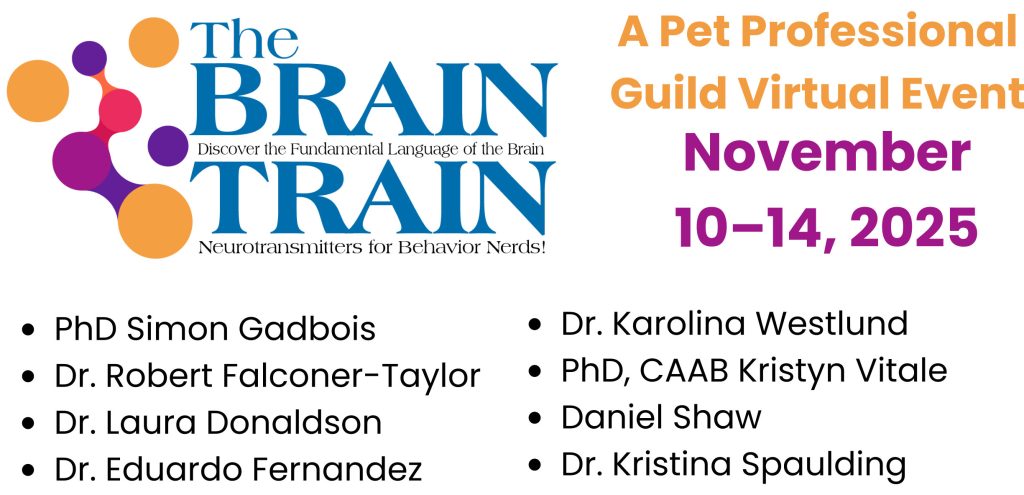Pets and Their People Blog
Learning – From a Dog’s Perspective
I suspect that human beings seldom consider how dogs may learn from us, and I suppose many assume dogs will learn just as we do. But what if dogs have different innate abilities and learning methodologies?
Are we working together as a team, or at cross purposes? Do we set dogs up for success, or failure? After all, we are trying to impose a human-oriented world order upon dogs, who evolved for eons according to the rules of nature, not the rules of humankind.
I propose that we look at the learning process from the dog’s perspective and in consideration of their unique abilities.
Communication
If a person is explaining something to me and I comprehend, I may say “Oh, I see what you mean.” Generally, humans are very visual, and use spoken language. There may be 1,022,000 words in English. How many do we enjoy using, as opposed to how many a family pet actually “understands”?

(Photo of Max by D. Antolec)
Dogs are also visual creatures, but use mostly non-verbal communication with a smattering of vocalizations, and they have an amazing olfactory system. A dog, may think “Oh, I smell what you mean.”
When I work with a new client, nearly all ask, “Why aren’t you saying anything, or giving commands to my dog?” It’s because a word has no meaning to a dog until we create an association.
I remember a seminar in which Dr. Ian Dunbar sought a volunteer from the audience who agreed to help him. Dr. Dunbar gave the volunteer instructions – speaking in Swahili. The volunteer was, of course, confused and did not comply. Dr. Dunbar repeated the instruction again, with a harder tone of voice, and the volunteer still did not respond. Then Dr. Dunbar chastised the volunteer for “not cooperating.” Do we sometimes do the same thing to our dogs?
Dr. Dunbar was making a point about communication. We must communicate with the learner in a way that they understand.
I cannot remember how many times I have heard “My dog only does it when he wants to,” or “My dog is stubborn.” That is a teaching moment for the human, as I suggest maybe the instruction was not clear, or did not correspond to how your dog learns, or there was too much distraction, or the motivation was not strong enough, or the timing between behavior and reinforcement was too slow, etc.
There are “maybes” to consider other than blaming the dog.
Sensory Input

(Photo of Julien by D. Antolec)
Dogs and humans process sensory input differently. Plus, dogs have a lot of sensory input to juggle that humans do not have to deal with during our own learning processes. How might these factors affect the learning process of canines versus humans?
Scent – Your dog’s sensory input is preoccupied with odors in the environment. Dogs have up to 300 million olfactory cells, while humans have far fewer (some estimates are between 5-10 million). In terms of mass, 33% of a dog’s brain is devoted to olfactory function, compared to only 5% of a human brain. That is like comparing my ultra-powerful 2024 PC to the Commodore 64 computer I had back in the 1980s.
Dogs can even take in scent while exhaling, which humans cannot do. They also detect volatile organic compounds produced by disease, detecting ovarian cancer and COVID-19 more accurately than expensive medical tests. They can also smell stress and fear. How well can we learn while in a state of distress and fear? (Not well.)
Vision -Humans have a peripheral view of up to 180 degrees while dogs have a view of up to 270 degrees, and notice motion more readily than us. Humans see three primary colors, while dogs see only two, and do not easily distinguish between red and green. However, they see in dim light about five times better than humans. Short-nosed dogs have better near vision, while dogs with long noses have better peripheral vision.
There is also research suggesting dogs sense variations in the magnetic field and see in the ultraviolet spectrum. (UV light allows dogs to see urine trails which is helpful for tracking prey.)
In summary, the way dogs see the world is different than how humans see the world.

(Photo of Charlie by D. Antolec)
Hearing– A dog’s hearing is about four times more sensitive than a human’s and dogs hear in the ultrasound range (humans cannot). How distracting might that be when we are “Blah, blah, blahing” away at them and they are intrigued by sounds that we cannot detect?
Dogs live in a noisy human-dominated world saturated with language and high-frequency electronic gizmo sounds which they are expected to ignore.
They listen to the radio, TV shows and movies we watch. They hear us talking to one another on the phone, and none of that verbal language pertains to them, so the brain tunes out the unimportant noise. If you live near a highway or an airport, you have learned to do the same thing. The tornado sirens are tested every Wednesday at noon in my county, so I ignore the sound. But if I hear the sirens during a thunderstorm, I pay attention.
We must be careful about how we teach verbal cues to our dogs so they can learn to pay attention to important verbal cues. rather than “Blah, blah, blah” our dogs into oblivion.
Processing Information
The prefrontal cortex is a brain region responsible for decision-making and executive function (among other things), which are important in learning. Twenty-nine percent of a human brain is prefrontal cortex, whereas approximately 5-10% of a canine’s brain is.
The scientific community considers an adult dog, two years or older, to have emotional and cognitive development comparable to a 2 ½ -year-old human toddler.
Consider how an 8-week-old puppy or a hormone-driven adolescent dog comprehends our training exercises. Imagine sitting in a pre-school class, while experiencing sensory overload, and a teacher is expecting perfect attention from us. Might the teacher say…“You only do it when you want to…you are stubborn! Why are you not cooperating?”
Set Dogs Up for Success
Dogs are smart and they can learn, but they need some empathy and patience as they process information.
- Use hand cues. Hand cues take priority for most dogs; they are among a few species who follow our hands and our gaze for information. When teaching a new behavior, I may capture it, meaning I catch the dog engaging in the behavior naturally and reinforce it, and then add hand and/or word cues. I may also lure the dog into the behavior, adding a hand cue, and then a word cue.
- Introduce a word cue correctly. Let’s assume you first lured your dog into a sitting position with a treat and then faded the lure, using only a hand cue. The next step is to add the word cue- and in this order: Say the unfamiliar word “sit” and pause one second. Then use the familiar hand cue. When your dog sits, reinforce that behavior. Repeat this sequence a few times and then do a pop quiz by just saying the word cue…and wait for a response. You are testing to see whether your dog has associated the word with the hand cue and the behavior of sitting. We want your dog to learn, “Oh, the hand cue and the word cue both mean the same thing. Got it!”
- Use a marker. Using a marker (a clicker or a word such as, “Yes!”) improves the learning process. Research shows that both do the job and dogs learn quicker, and more, than without a marker.
- Stay within your dog’s learning capacity in the moment. Doing short training sessions with a break in between helps, as short-term memory transfers to long-term memory after a sleep cycle. And dogs enjoy taking naps.
- Most importantly, make learning fun!
I hope this information opens the eyes of humans who are teaching dogs, so we can be less demanding and more understanding.
About the Author

Daniel H. Antolec, PCT-A, CCBC-KA, CPDT-KA began teaching dogs in 2011 and founded Happy Buddha Dog Training. He teaches dogs in a way that makes it fun for pet stewards and pets alike.

